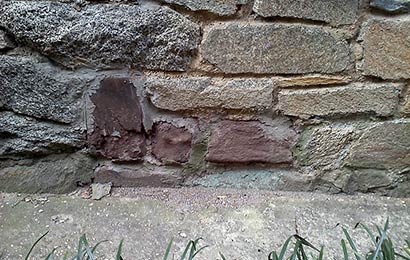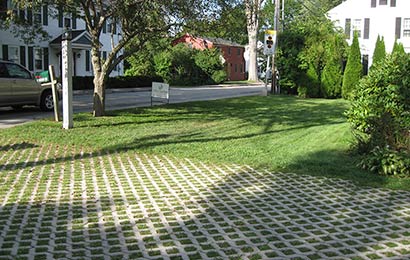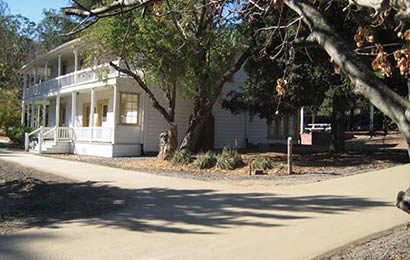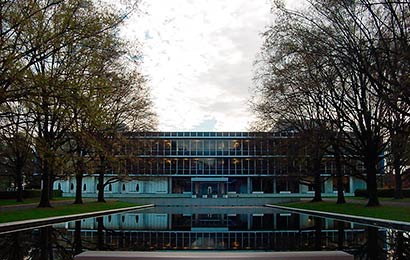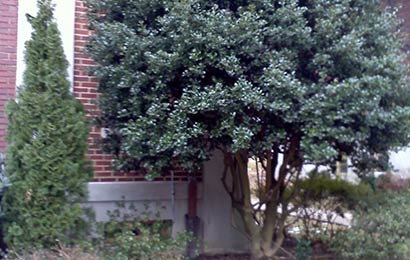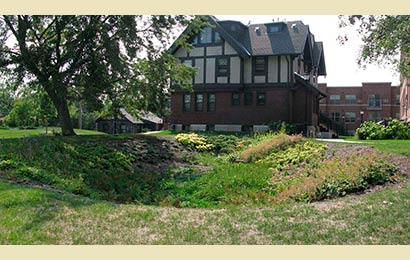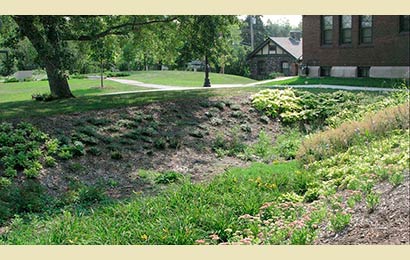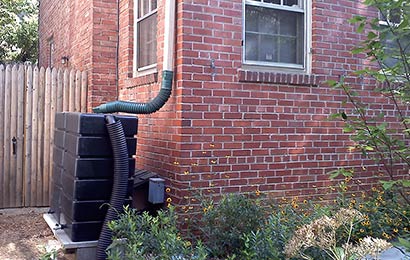THE SECRETARY OF THE
INTERIOR’S STANDARDS FOR
REHABILITATION &
ILLUSTRATED
GUIDELINES ON
SUSTAINABILITY
FOR REHABILITATING
HISTORIC BUILDINGS
Site Features and Water Efficiency
Recommended
Not Recommended
Respecting an important cultural landscape and significant character-defining site features when considering adding new sustainable features to the site.
Installing new sustainable site features without considering their potentially negative impact on an important cultural landscape and character-defining site features.
Using to advantage existing storm-water-management features, such as gutters, downspouts and cisterns, as well as site topography and vegetation that contribute to the sustainability of the historic property.
Ignoring existing features that contribute to the sustainability of the historic property.
Adding natural, sustainable features to the site, such as shade trees, if appropriate, to reduce cooling loads for the historic building.
Removing existing natural features, such as shade trees, that contribute to the building’s sustainability.
Planting trees where they may grow to encroach upon or damage the historic building.
Using permeable paving where appropriate on a historic building site to manage storm water.
Avoiding paving up to the building foundation to reduce heat island effect, building temperature, damage to the foundation and storm-water runoff.
Paving up to the building foundation with impermeable materials.
Landscaping with native plants, if appropriate, to enhance the sustainability of the historic site.
Introducing non-native plant species to the historic site that are not sustainable.
Adding features, such as bioswales, rain gardens, rain barrels, large collection tanks and cisterns, if compatible, to the historic building site to enhance storm-water management and on-site water reuse.



